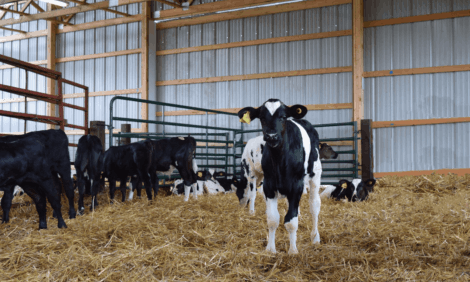



Ready for the US Veterinary Feed Directive?
US - Public perception that antibiotic use in animal feed may be leading to antibiotic resistance is driving the new US Veterinary Feed Directive (VFD) Final Rule, which takes effect January 1, 2017.The FDA’s new rules will eliminate the use of feed-based antimicrobials for improved growth and feed efficiency if the antimicrobials are considered to be “medically important” for humans, said Ben Laine, CoBank senior economist.
Going forward, in order to purchase any antimicrobials considered medically important in feed, a supplier will need a written VFD order from a veterinarian. The veterinarian will need to have a legitimate veterinarian-client relationship (the definition varies by state), and the prescribed antimicrobials cannot be approved for any other use beyond what is on the label.
What are the major changes coming with the new rule?
- The requirement of an established veterinarian-client relationship, and a written VFD order from a veterinarian to obtain any VFD feed.
- The removal of references to “improved growth rates” and “enhanced feed efficiency” from labels, and the prohibition of extra-label use.
When do the rules take effect?
- The new rules will go into effect January 1, 2017.
- Any drugs on-hand at that point which would fall under the new rules do not need to be discarded, but will require a documented VFD for continued use.
How will this affect dairy?
- The impact on dairy producers should be limited. Ionophores, which are the most commonly used antimicrobials in dairy operations, are not considered medically important for human use, and do not fall under the VFD regulations.
- The most significant impact to dairy will be on medicated milk replacers. Milk replacers containing Oxytetracycline and Neomycin will now require a VFD and must be used as directed on the label.
What steps should dairy producers take?
- Most dairy producers already have a relationship with a veterinarian, but should establish one if they do not.
- Producers should work with their veterinarian to understand the specifics of changes on their operation, and discuss alternatives to practices that will be affected.
According to University of Minnesota Extension Educator Jim Salfer, following are steps that can help make the transition easier:
- Make a list of all the feed grade medications that you purchase and become aware of which might be affected by this rule.
- Visit with your veterinarian about these antibiotics and which ones might be affected by the new rule.
- Begin keeping good records of antibiotic use for all animals on the farms. Most dairy farmers keep excellent records of antibiotic treatments on cows, but are much less diligent about these records on calves and heifers.
- Work with your veterinarian and other key members of your management team to prevent disease outbreaks and develop appropriate treatment protocols for all animals on the farm.



